Dragon fruit, also known as pitahaya or pitaya, belongs to the cactus family. Dragon fruit is relatively easy to grow outdoors or in a pot. The Dragon fruit plant is a climbing, large fruit plant that grows in tall, succulent branches, thickens, and produces bright red or yellow fruit. Dragon fruit farming is a low maintenance and high profitability business.
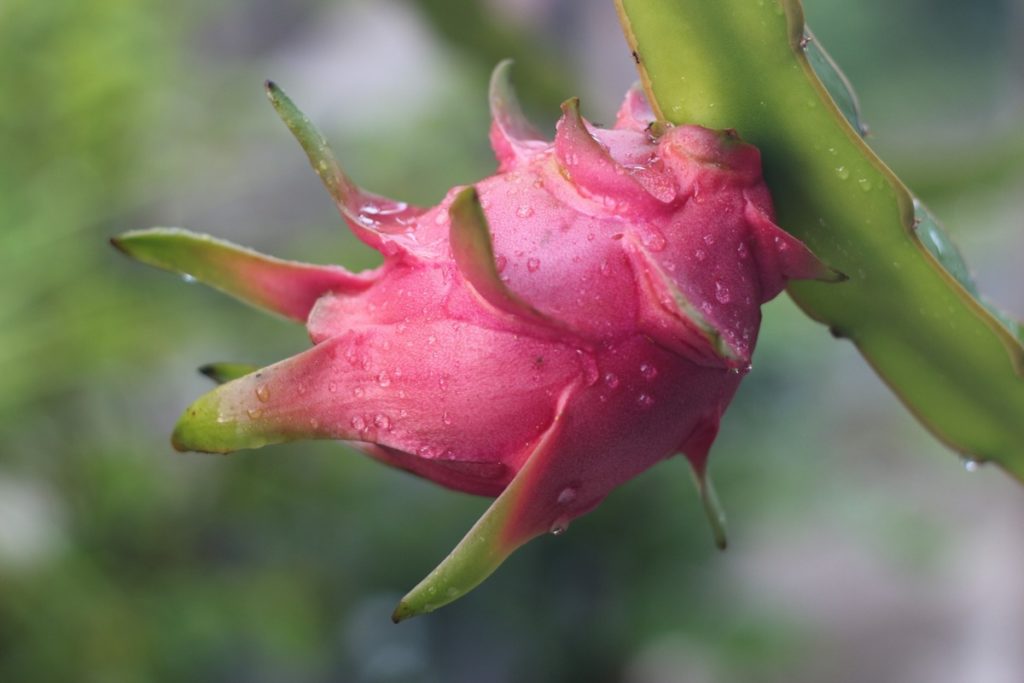
These are the many uses of Dragon fruit that we should pay attention to because Dragon fruit is most beneficial in health care. The fruit is rich in antioxidants, vitamin C, and fiber and low in calories. But, of course, if you also take Dragon fruit juice, it will help. These are the many benefits of Dragon fruit; that’s why Dragon fruit farming is the most popular.
How to start Dragon fruit framing in the USA for beginners
Can Dragon fruit be grown in the US?
- About three states commercially grow Dragon fruit: California (primarily Southern California), Florida, and Hawaii.
- In the United States, Dragon fruit can grow outdoors in USDA plant hardiness zones 9 through 11. However, if your outdoor environment is too cold or too hot for Dragon fruit, you can also grow Dragon fruit plants successfully.
- To grow Dragon fruit successfully, you must ensure the plant stays in temperatures between 32 and 90°F, limited to USDA hardiness zones 9 through 11 (southern California and parts of Florida).
How many different varieties of Dragon fruit are there in the USA?
- The two main species grown for commercial production are Hylocereus undatus, which has bright pink skin and white-fleshed fruit, and Hylocereus sp., which has bright pink skin and various shades of pink flesh. There are several types of both.
- Selenecereus megalanthus is another Dragon fruit grown for commercial production, with yellow skin and white flesh. All Dragon fruits contain small edible black seeds that resemble kiwi seeds.
- Dragon fruit has a similar texture to kiwi or watermelon and has a slightly sweet flavor with subtle earthy notes. Cultivars with dark pink flesh are said to have the best flavor. Dragonfruits are about the size of a baseball but oval.
What soil is required for Dragon fruit?
- Dragon fruit can be successfully grown on almost any soil, but sandy soils with good drainage are generally preferred. Soil pH level should be between 5.5 to 6.5 for a good crop. The bed must be at least 40-50 cm high.
- The best soil for Dragon fruit is well-drained and rich in nutrients, ideally with a good amount of loamy sand and some organic matter to retain water and nutrients.
How do I start Dragon fruit farming?
- Dragon plants should be generally planted in full or almost full sun (very light shade) for the best fruit growth and production. For growing Dragon fruits, select a part of the landscape away from other trees, buildings, and structures and away from power lines. Remember, Dragon plants can become very large if not pruned to maintain their size. Choose the warmest area of the landscape that won’t flood (or stay wet) after a typical summer.
- The best climate for growing Dragon fruit – Although it is in the cactus family, it’s not like the cactus you usually see in the desert. Dragon fruit is a subtropical cactus native to Central America. It is from South America and thrives in mild, humid environments.
- If your climate is too cold or too hot outside for Dragon fruit, you can also successfully grow a Dragon fruit plant in a pot. To keep your plant disease-free and to grow appropriately on its support system, cut back any dead, dying, diseased, or overcrowded branches.
- During the growing season, fertilize your Dragon fruit plant once a month to give it the nutrients it needs. Once your Dragon fruit tree has started bearing fruit, harvesting is easy. Look for well-colored fruit whose “wings” (the flaps of skin on the outside of the fruit) are beginning to wilt. Twist the fruit gently – if it is ripe, it will easily come off the stem. Please don’t wait for the fruit to fall off your stem; it will be overripe.
In case you missed it: How to Grow Dragon Fruit from Scratch: Check How this Farming Guide Helps Beginners
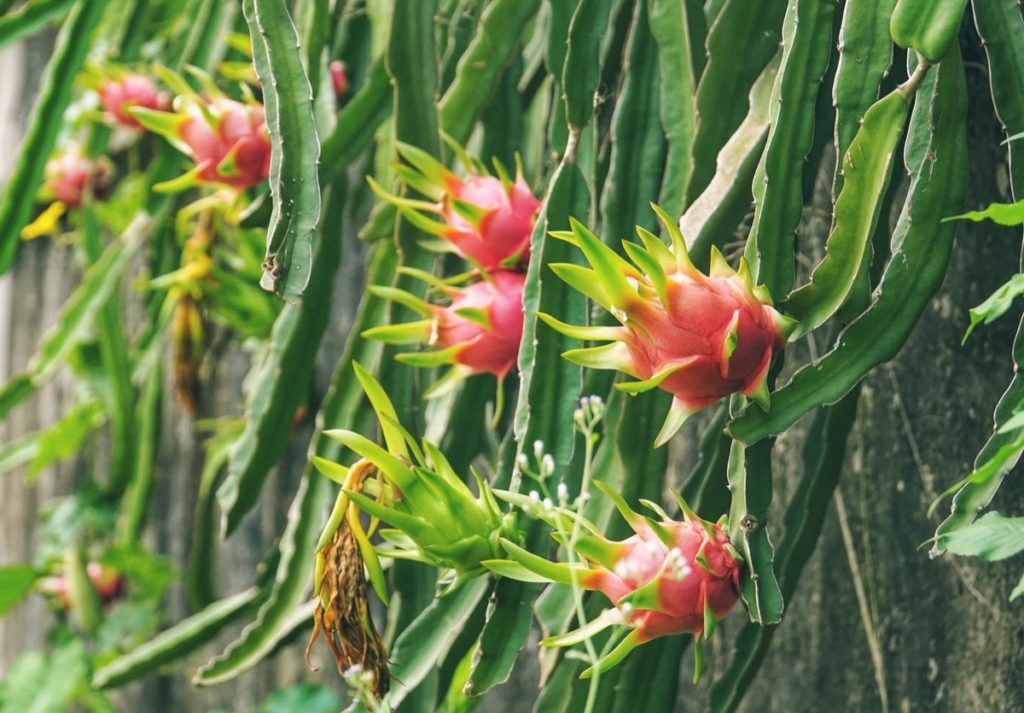
Is Dragon fruit farming profitable in Florida?
- Native to tropical America, the Dragon fruit, or pitaya, is an epiphytic cactus that grows like a multi-branched vine. Dragon fruit thrives in Florida’s climate and calcium-rich soil and adds interest to any Florida landscape.
- South Florida has many acres of Dragon fruit production. Also, these unique fruits are grown throughout the Central Florida backyard. These strange-looking, mild-tasting fruits can be eaten fresh or made into drinks, desserts, or jams.
- If you are an exotic fruit lover gardening in Florida, you can try growing Dragon fruit. Choose your variety or species of Dragon based on fruit color, sweetness, and whether it is prickly or prickly, as well as what varieties do best in your area. Add 50% good compost for most Florida soils. Make sure the area is well drained.
- Dragon plant grows well in South Florida soils. Dragon fruit thrives in rich organic soil with added compost but is adaptable to many soil types. Plant the cured cutting directly into the soil or into a pot. Plant potted plants directly into prepared soil. Plant Dragon fruit on mounds if the area becomes waterlogged during the rainy season. Several bacterial diseases attack the Dragon plant in Florida, including Xanthomonas, Dothiorella, and Fusarium. Anthracnose is known to attack both plants and fruits. Check for insects, fruit flies, ants, slugs, mealybugs, and borers, and treat accordingly. Birds, raccoons, rats, and possums can damage fruits and plants.
Can you grow a Dragon fruit plant from seed?
- An easy method to grow Dragon fruit is to purchase Dragon fruit at the grocery store and plant seeds. It may take several years (sometimes up to five) to bear fruit.
- Dragon generally needs full sun, so choose a sunny area in your garden or a sunny windowsill with at least six hours of sunlight a day. Select well-drained soil (Dragon fruits are sensitive to “wet feet” or constantly wet roots) and rich in organic matter. Don’t use cactus soil — as tropical plants, Dragon fruits like more water than other cacti and want something that slightly improves humidity.
- Cut a ripe Dragon fruit carefully and then scoop out the black seeds. Wash the seeds and then place the seeds on a damp paper towel for at least twelve hours.
- Sprinkle fruit seeds on the soil surface and cover them with a thin layer of soil. It’s okay if it barely covers the seeds—they don’t need to be planted deep. If the soil starts to dry out, cover the soil bed with plastic wrap to trap moisture until the Dragon seeds germinate.
- As Dragon fruit plants grow, thin them out to give each new plant room. If you grow the Dragon indoors, transplant them into larger pots. Mature Dragon fruit will eventually need at least a twenty-gallon pot (at least twenty inches wide) for optimal health.
Can you grow Dragon fruit in a container?
- Dragon fruit is native to Mexico, but you can also grow it in your backyard or balcony. Unlike most cacti, Dragon fruit likes its soil to be slightly moist. Plant your Dragon fruit in a well-draining potting soil designed for cacti, or if planting in the ground, make sure your soil is sandy and slightly acidic.
- Select a pot one or two sizes larger than the size of your plant’s root ball. Start the plant in a 5-gallon, 10-12-inch deep container and repot every year or when the plant appears rooted. A large 20-30 gallon pot around 20-24 inches deep is sufficient to accommodate a mature Dragon fruit tree.
- The bigger the container or pot, the more space it has for the roots to grow; hence, it is better for growing Dragon fruit. Be sure not to overwater your Dragon fruit. It will kill the plant. A light mist or a drop in the soil is enough for the plant.
Does a Dragon fruit plant need support?
- The Dragon plant is a climbing cactus that needs support to climb; usually, as the plant matures, it forms aerial roots from the branches and finds something to climb on. So, it is best if you are growing Dragon fruit to find something to support your plant.
- It’s a climbing cactus, so it needs a frame or trellis to grow and move around, but once it’s in place, it’s relatively easy.
- Two types of pruning are required to maximize healthy, good-quality fruit production. The first involves training growing plants until they reach the trellis. It involves cutting off the main stem and any lateral stems until it reaches the trellis and tying the main stem to the trellis post. Immediately after the plants reach the top of the trellis, their tips should be cut to induce branching, and new laterals should be trained and tied to the trellis.
In case you missed it: Top 15 Steps to Boost Dragon Fruit Yield: How to Increase Production, Size, and Quality
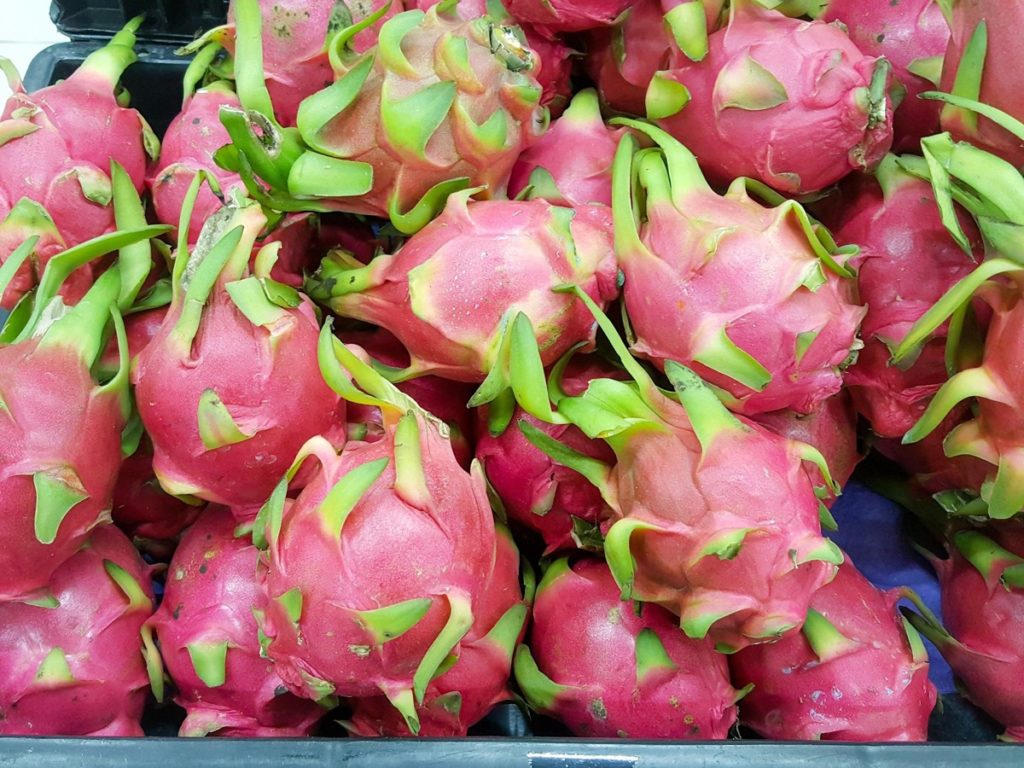
How do you cultivate a Dragon fruit successfully?
- It needs full sun to produce fruit so plant it in full sun or in a location that gets at least 6 hours of sunlight a day. Also, ensure your plant is in a warm, sunny spot when indoors. Unlike most cacti, Dragon fruit likes its soil to be slightly moist.
- Organic fertilizers play an important role in good plant growth and development. Treat each Dragon plant with at least 10 to 15 kg of organic fertilizer. After that, you must add about 2 kg of fertilizer annually. Along with organic, the Dragon plant also needs inorganic fertilizers for good plant growth. The fertilizer ratio for the vegetative plant stage is Muriate of Potash: Superphosphate: Urea = 40:90:70 grams/plant.
- At the fruiting stage, you want to give the plant high amounts of potash and low amounts of nitrogen. Various fertilizers must be applied from flowering to harvest stages, including urea: superphosphate: and muriate of potash = 50:50:100 grams/plant. It can be given before flowering, fruiting, and harvesting the Dragon fruit. It can increase the Dragon fruit farm productivity.
How much does Dragon fruit cost?
In the USA, the average price of Dragon fruit is $5-$6.
Can I grow Dragon fruit in California?
- Dragon fruit is very well adapted to field growing conditions in Southern California, and this drought-tolerant plant is a good choice for small-scale producers in Southern coastal California. It can be a profitable alternative to the crop. Dragon fruit plants are quite drought tolerant; thus, the plant is being grown in some areas to replace traditional crops such as Citrus and Avocado.
- Dragon fruit needs 25 to 50 inches of water per year, and care should be taken with overwatering to avoid flower drops and fruit rot. In addition, dragon fruit plants are considered climbing cactus, and commercial gardens need to use trellising to support the plant.
- Dragon fruit plants can produce fruit within a year of establishment and remain in production for approximately 30 years. Another important consideration when establishing a Dragon fruit garden is pollination requirements. Many cultivars are self-pollinated; however, some are self-incompatible and thus require cross-pollination for fruit development.
Is Dragon fruit farming profitable?
- Dragon fruit farming is very profitable.
- Dragon fruit production is a profitable enterprise and a promising source of income for farmers in the United States.
- The ever-increasing land for Dragon fruit indicates its great potential as a commercial crop.
Can you grow Dragon fruit from cuttings?
- Dragon fruit can be started from either cuttings or seeds. It’s best to start growing Dragon plants with cuttings, as they grow and bear fruit faster than seedlings.
- To take Dragon fruit cuttings, cut off a piece of new growth from a Dragon fruit plant.
- Dragon fruit is easier to grow from cuttings. The stem should be about 6-16 inches long from the fruiting plant. Be gentle with the roots of your cuttings when planting, and try not to disturb them. A slight loosening of the roots is sufficient.
- Dragon plants are low-maintenance plants. The plants are not heavy feeders and do not need a lot of fertilizer. Over-fertilization will harm your plant. Choose an organic, low-nitrogen fertilizer and apply it at planting time and then every other month or less.
How many fruits can a Dragon fruit tree produce?
The peak yield of plants occurs in the third year of harvest, reaching 32 to 100 fruits per plant.
What is the best season for Dragon fruit in the USA?
- Summer (June to September) is the prime season for fresh Dragon fruit.
- For most Dragon species, August and September are the peak months. However, species of Selenecereus megalanthus bear fruit during the winter months of November to February.
- Dragon fruit is grown primarily for the fresh market and is often sold through specialty stores and farmer’s markets. US demand for Dragon fruit exceeds supply, thus creating an opportunity for US growers to commercially grow the fruit on a large scale that fills this niche.
In case you missed it: Earning 12 Lakh from Dragon Fruit Cultivation: A Success Story of a Farmer in India
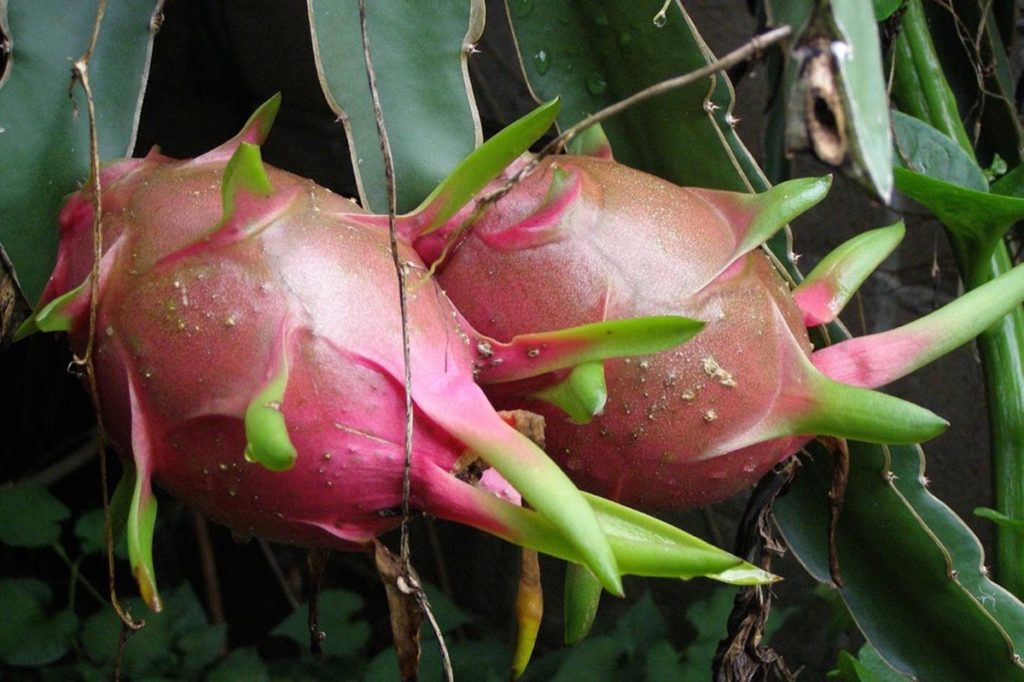
How do you make Dragon grow faster?
- Dragon fruit needs full sun to produce fruit so plant it in full sun or in a location that gets at least 6 hours of sunlight a day. Ensure your plant is in a warm, sunny spot when indoors.
- Unlike most cacti, Dragon fruit likes its soil to be slightly moist. Plant your Dragon fruit in a well-draining potting soil designed for cacti, or if planting in the ground, make sure the soil is sandy and slightly acidic.
- Dragon fruit is generally a vining cactus and likes to climb. It can climb 5 to 10 feet, providing some support with stakes or trellises. And since the plant can be loaded with fruit, ensure your support system is strong.
- This plant appreciates a low-nitrogen cactus fertilizer every other month during its summer growing season, then stops feeding when winter approaches.
- Dragon fruit is growing well in tropical lowlands; it is a climbing cactus plant that can live for up to two decades. A semi-thorny plant may have long, fleshy, triangular stem segments that should be pruned regularly.
- Commercial gardens require a trailing system to support the plant’s vertical growth and aerial roots. Water flowers or establish Dragon fruit during long dry periods. Overwatering will cause disease problems.
How do you fix yellow Dragon fruit?
- Dragon fruit plants may turn yellow as an indicator of stress due to environmental factors and need to be identified and remedied as soon as possible.
- The main causes of yellowing Dragon fruit plants are too much sun, stem rot, overwatering, disease, and insects. Overwatering the plant is probably the most common cause of plant death. Don’t be tempted; they don’t need it. Be mindful of how it comes out if you’re using a pot. If there are no drain holes, it is also less needed. Otherwise, the water will sit at the bottom and cause rot and decay.
- Leaves turn yellow or tan – When the leaves change this color, the plant may get too much fluoride in the water. Leaf tips may also turn yellow. Try to remediate any soil that contains fluorides, such as perlite. Check the soil’s pH level to make sure it is slightly acidic.
- Stem rot – Another common cause of yellowing Dragon fruit plants is stem rot. Dragon fruit plants with stem rot symptoms include susceptibility to various diseases, small fruit, stunted growth, easy sunburn, and low drought tolerance. You can use any copper fungicide, such as copper sulfate, to spray on affected areas to help control stem rot in its early stages. A copper fungicide will not cure stem rot, but it may prevent further development of the disease. Another method to prevent stem rot is to bleach the plant. It happens when you paint sensitive plant areas with a solution containing a fixing agent, insecticide, fungicide, and lime. This solution prevents the disease from developing in the first place.
Can you grow Dragon fruit in Arizona?
- Phoenix’s state capital is in the south-central part of Arizona and falls in USDA planting zone 9b. Growing Dragon fruit in Phoenix is possible as long as it is planted and cared for properly. If temperatures drop, these plants will need to be protected from frost.
- Arizona planting zones range from 4b to 10b. Phoenix’s state capital is in the south-central part of Arizona and falls in USDA planting zone 9b. Growing Dragon fruit in Phoenix is possible as long as it is planted and cared for properly. If temperatures drop, these plants will need to be protected from frost.
- Arizona’s climate is arid to semi-arid, and residents experience extreme heat, mild winters, and other extreme temperatures at various times. High-altitude areas have cold winters and mild summers.
In case you missed it: Dragon Fruit Farming Profit, Cost, Yield, Project Report
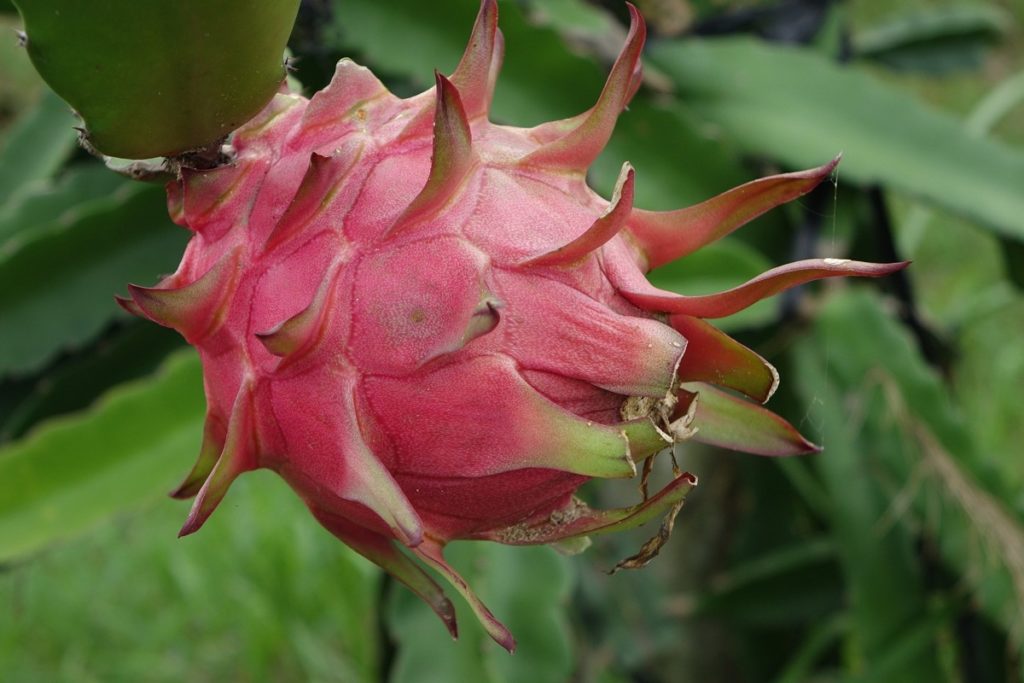
How often do you water Dragon fruit?
Under normal conditions, Dragon fruit plants must be watered once every two weeks. The soil must feel dry or slightly moist but never hard or swampy. Although Dragon plants are members of the cactus family and can tolerate dry periods, their water requirements are quite high.
However, excessive soil moisture will lead to the development of bacterial and fungal diseases. A dry period like winter and early spring is required for abundant flowering, but production may be impaired by drought once the plants flower (late spring and summer). Therefore, periodic watering from flowering through the crop is recommended.
Which states sell Dragon fruit?
- Generally, Dragon fruit is grown commercially in three states: California, Florida, and Hawaii.
- More recently, the University of California’s Division of Agriculture and Natural Resources reported that California grows 100 to 200 acres of Dragon fruit, Hawaii grows about 200 acres, and Florida Cultivates more than 400 acres.
What pests and diseases do Dragon fruit get?
- Thrips can cause severe damage to the fruit outside but are currently only found in Florida. Small insects will mark the fruit with a stippled pattern which is mainly an aesthetic problem. The leaf-footed bug can be a nuisance and is commonly found in Colombia, Nicaragua, and Mexico.
- Aphids and ants, scale, and mealybugs can affect yield when not controlled, while birds, snails, and rodents can also disrupt growth and subsequent harvest.
- Soft rot can affect the stems, and calcium deficiency has been linked to the worsening condition in Mexico. Another damage involves the root system when additional injuries such as sunburn or other opportunistic diseases occur. Cactus virus X can result in stunted growth, such as no new shoots or flowers, elongated stems, and a dark pale green color. Currently, there is no treatment, and infected plants should be removed. Other diseases and pathogens include anthracnose, brown spot, canker, and fruit rot.
How many years will it take to harvest Dragon fruit?
- Plants can begin flowering in six to eight months, although container-grown plants can take up to two years to bear fruit. The good news is that once the Dragon plant is mature, you can see four to six fruiting cycles per year from a plant that has the potential to bear fruit for 20 to 30 years.
- Once your Dragon fruit plant has set fruit, wait to harvest it until it turns color. Most Dragon fruits will turn a beautiful bright pink-magenta color, but some are bright yellow. Generally, the longer it is on the plant, the sweeter it is.
How much does Dragon fruit yield in the USA?
- Economic fruit production in the Dragon plant begins after three years in well-managed orchards, and average yields can be high.
- The estimated yield of fully mature Dragon fruit plants is ≈19,000 lb/acre.
In case you missed it: Organic Dragon Fruit Farming – Cultivation, Business Plan
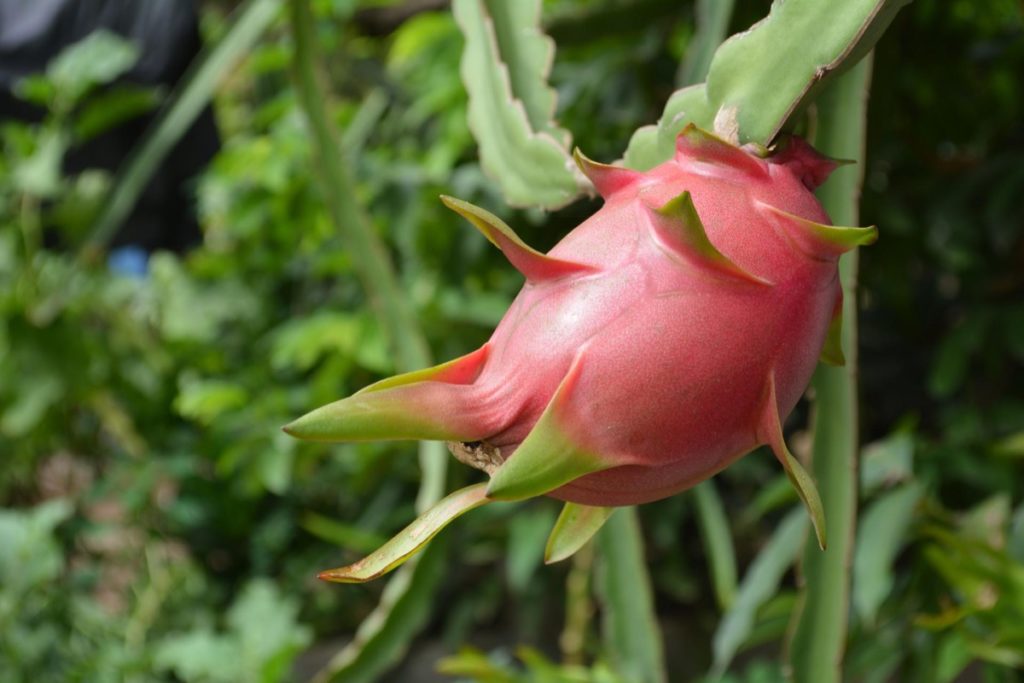
Conclusion
Dragon fruit farming has become increasingly popular recently. It is important to quickly identify problems affecting your Dragon fruit, as this can determine the potential consequences of your fruit production. This article provides information on the types of Dragon fruit and the best-growing conditions for Dragon fruit in the United States.
- Types of Pesticides Used in Agriculture: A Beginner’s Guide
- Economical Aquaculture: A Guide to Low-Budget Fish Farming
- 15 Common Planting Errors That Can Doom Your Fruit Trees
- How to Make Houseplants Bushy: Effective Tips and Ideas
- Innovative Strategies for Boosting Coconut Pollination and Yield
- Pollination Strategies for Maximum Pumpkin Yield
- The Complete Guide to Chicken Fattening: Strategies for Maximum Growth
- Natural Solutions for Tulip Problems: 100% Effective Remedies for Leaf and Bulb-Related Issues
- Revolutionizing Citrus Preservation: Towards a Healthier, Greener Future
- Natural Solutions for Peony Leaf and Flower Problems: 100% Effective Remedies
- Maximizing Profits with Avocado Contract Farming in India: A Comprehensive Guide
- Natural Solutions for Hydrangea Problems: 100% Effective Remedies for Leaf and Flowers
- The Ultimate Guide to Choosing the Perfect Foliage Friend: Bringing Life Indoors
- From Sunlight to Sustainability: 15 Ways to Use Solar Technology in Agriculture
- The Ultimate Guide to Dong Tao Chicken: Exploring from History to Raising
- The Eco-Friendly Makeover: How to Convert Your Unused Swimming Pool into a Fish Pond
- Mastering the Art of Delaware Chicken Farming: Essentials for Healthy Backyard Flocks
- 20 Best Homemade Fertilizers for Money Plant: DIY Recipes and Application Methods
- How to Craft a Comprehensive Free-Range Chicken Farming Business Plan
- Brighten Your Flock: Raising Easter Egger Chickens for Beauty and Bounty
- How to Optimize Your Poultry Egg Farm Business Plan with These Strategies
- Subsidy for Spirulina Cultivation: How Indian Government Schemes Encouraging Spirulina Farmers
- Ultimate Guide to Raising Dominique Chickens: Breeding, Feeding, Egg-Production, and Care
- Mastering the Art of Raising Jersey Giant Chickens: Care, Feeding, and More
- Ultimate Guide to Raising Legbar Chickens: Breeding, Farming Practices, Diet, Egg-Production
- How to Raise Welsummer Chickens: A Comprehensive Guide for Beginners
- How to Protect Indoor Plants in Winter: A Comprehensive Guide
- Ultimate Guide to Grow Bag Gardening: Tips, Tricks, and Planting Ideas for Urban Gardeners
- Guide to Lotus Cultivation: How to Propagate, Plant, Grow, Care, Cost, and Profit
- Agriculture Drone Subsidy Scheme: Government Kisan Subsidy, License, and How to Apply Online
- Ultimate Guide to Raising Araucana Chickens: Breed Profile, Farming Economics, Diet, and Care
- Bringing Hydroponics to Classroom: Importance, Benefits of Learning for School Students
- Ultimate Guide to Raising Polish Chickens: Breed Profile, Farming Economics, Diet, and Care
- Ultimate Guide to Raising Australorp Chickens: Profile, Farming Economics, Egg Production, Diet, and Care
- Silkie Chicken Farming: Raising Practices, Varieties, Egg Production, Diet, and Care
- Sussex Chicken Farming: Raising Practices, Varieties, Egg Production, Diet and Care